Are Pull-ups Harder for Tall People?
Are pull-ups ACTUALLY harder for tall people? That would be the better question. Every tall person says that pull-ups are harder for them than for short people. Most tall people you know have probably been terrible at pull-ups. You certainly don’t see many tall gymnasts at the Olympics, right? We’ve all seemed to notice the trend… but is it true? Or is it just another “gymscuse?”
How to evaluate the issue? I could put together a survey to check people’s maximum pull up numbers and graph them relative to the person’s size. But that really just shows you a correlation. I wanted actual mathematical proof. I found my inspiration and opportunity while reading the syllabus for my CF-L1 Course. They laid out a simple calculation for the amount of work required to perform a pull-up in that book. Work is meant in its scientific definition: The amount of energy required to move a load over a certain distance. And the equation is quite simply the weight moved times the distance traveled. It’s not the most detailed calculation of a body in motion, but it’s more than adequate to answer the question at hand.
How do you figure out how much energy it takes to do a pull-up?
In the Level One Book, they used a simple example athlete. We’ll call him “SuperFit Joe” He is 6’0″ tall, weighs 200 lbs, probably dashingly handsome, and has an arm length that is roughly 24 inches. By multiplying those together we can figure out how much work he does during a pull-up. Moving a body mass of 200 lbs over a distance of 2 ft gives us 400 ft-lbs of work performed, as you can see below. (Unfortunately, the “dashingly handsome” part has no bearing on the outcomes of the calculations.)

Simple right? I figured it would be easy enough to take that equation and apply it to my own measurement to finally get the answer I was looking for! So I got out a tape measure, measured my arms, and hopped on the scale to get my weight. But I didn’t stop there. Knowing that I needed a bigger sample size, I figured it would be best to check myself against both an average size person and a tiny person. The metaphorical mathematical “cage match” was officially on. I decided to go up against my partner-in-blogging and my benchmark for pull-up prowess, Jess. I had to know if it was really that much easier for her to do those 20 unbroken pull-ups than it would be for me.
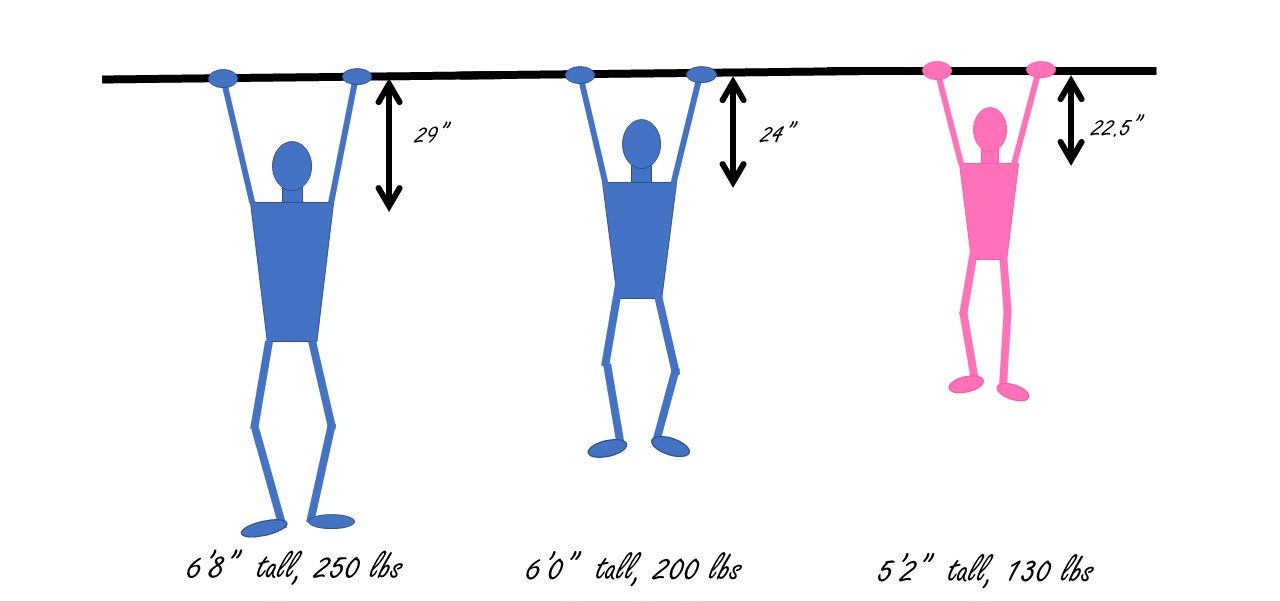
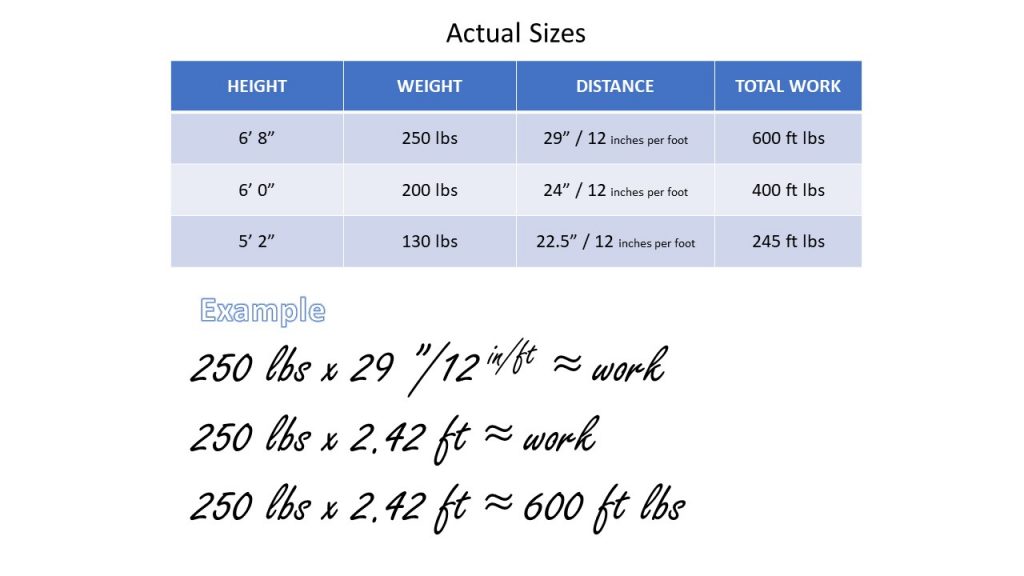
Is it Easier for Short People to do Pull-ups?
Finally, I had proof! Yes, it is easier for short people to do pull-ups! And by quite a bit! It was significantly harder for me to do a pull-up than it was for SuperFit Joe or Jess. Not only that, but the work required to do a pull-up increases faster than the size of the person. It becomes increasingly more difficult the larger you are! I finally proved I wasn’t just a wuss! But suddenly I realized there was a problem. I only showed that it was easier for the “13% body-fat, tiny-tower-of-power, Sarah-Connor-in-training” Jess to do more pull-ups than my slightly more dad-bod self. Would the numbers still hold up when we evened out the fitness and scaled the numbers to the averages?
A High BMI Makes Pull-ups Harder.
I know; not a shocking statement. But it didn’t occur to me until after I did my first set of calculations. It turns out that “SuperFit Joe” has a BMI of 27. My BMI was a little higher at about 29. But Jess was way smaller than that. At her competitive weight of 130 lbs, her BMI was 23. Suddenly, my calculations were starting to look a little suspect. I also realized that we both have relatively long arms for our height. So I decided I had to repeat my calculation with a normalized set of numbers. I normalized our weights to a BMI of 27. And I normalized our arm lengths to averages by multiplying our heights by 0.332. (This is based on the ideal ratios that artists use to draw the human figure.) The results are shown in the image below.
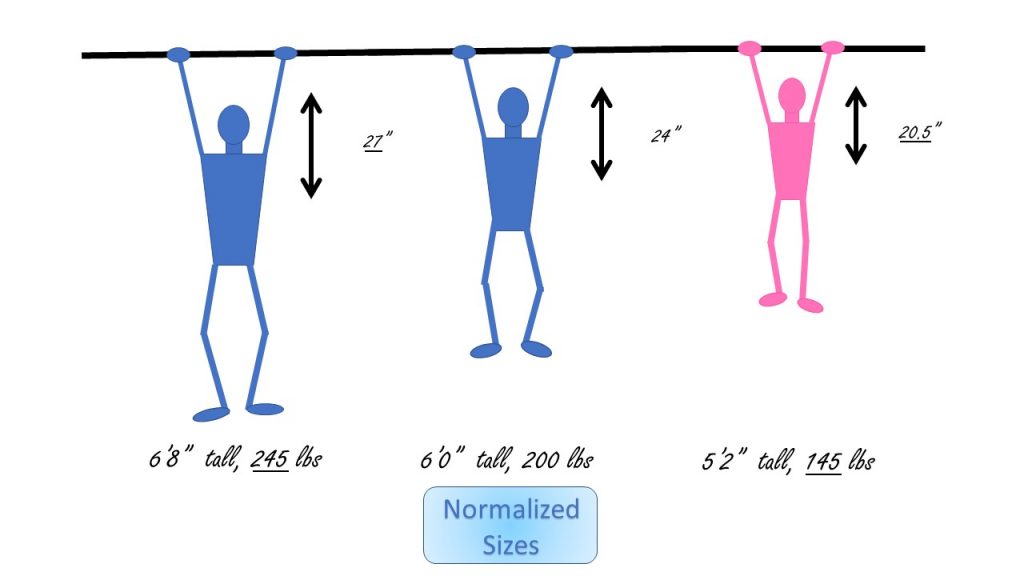
By decreasing both my weight and arm length, the work required for an average 6’8″ person decreased a bit. But because Jess’s arms got shortened and her weight increased, the normalized smaller person actually didn’t change by more than a couple points, and essentially rounded back to the same value.

My calculations still showed that the work required to do pull-ups increases proportionally faster than the increase in the size of the actual person.
I took those numbers, crossed my fingers, and repeated the calculations. To my surprise, some things changed but the overall lesson was unchanged. Of course, it’s not always easy to compare plain numbers. So I graphed these results to show you just how much difference there really is! (Cause I’m nice like that!)
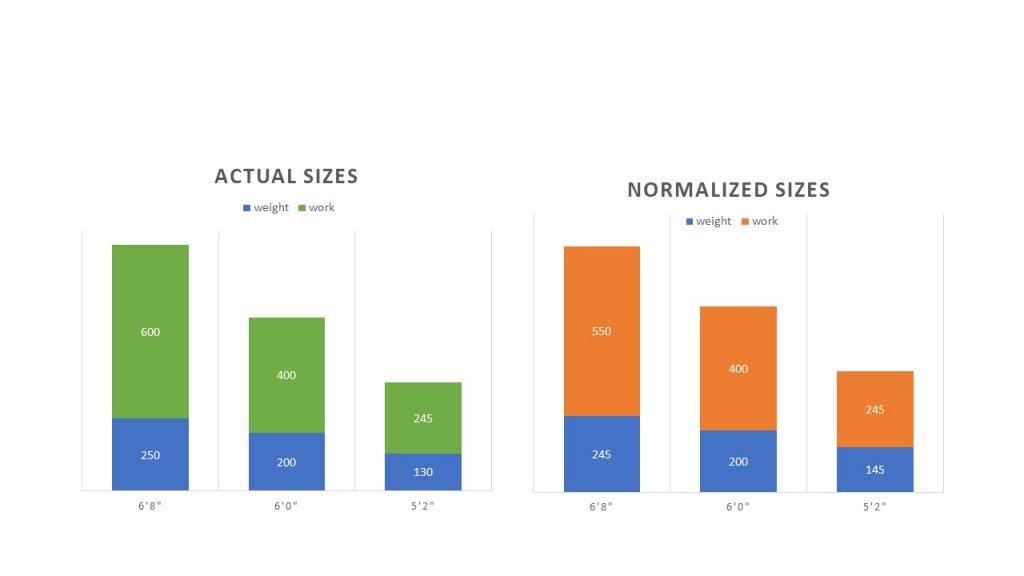
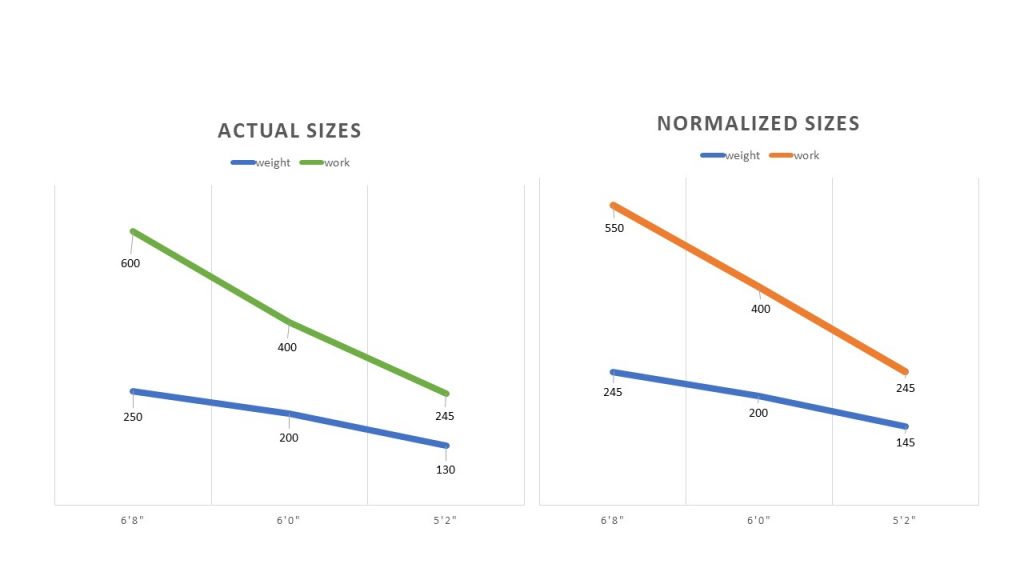
Overall, I felt pretty vindicated by these results. If Jess were to do those 20 unbroken pull-ups, it would take her roughly 4, 900 ft-lbs of work. For me, it would require 12,000 ft-lbs! If you want to scale them to the exact same amount of work, I would have to do only 8 pull-ups to do the same work as her 20! Fortunately for her, 8 unbroken pull-ups are still out of my reach. She still wears the crown… for now!

Dr. James Larson is an orthopedic surgeon specializing in sports medicine and arthroscopic surgery. He also holds a CF-L1 certificate and is a Certified BFR Specialist. He supports weight training and high-intensity exercise throughout the lifespan. He started LSO to keep more people moving better, longer.

